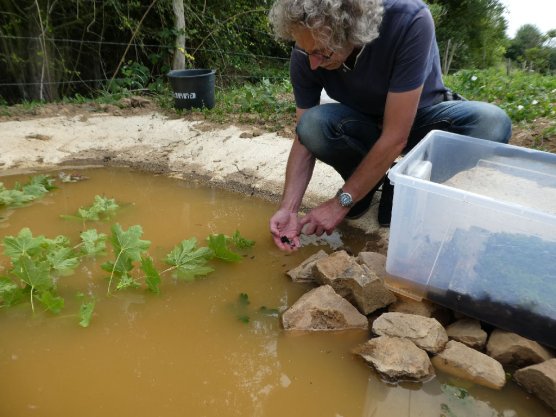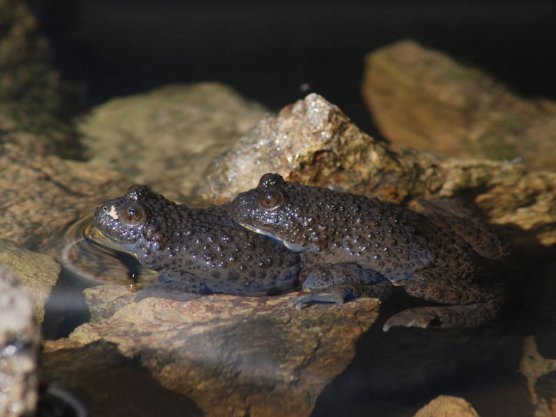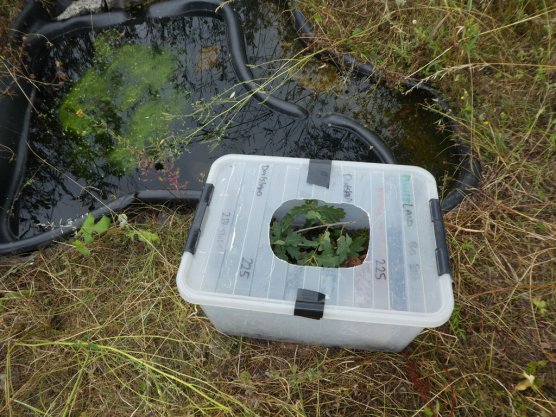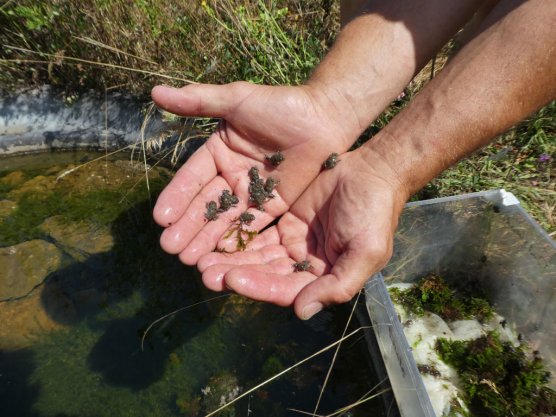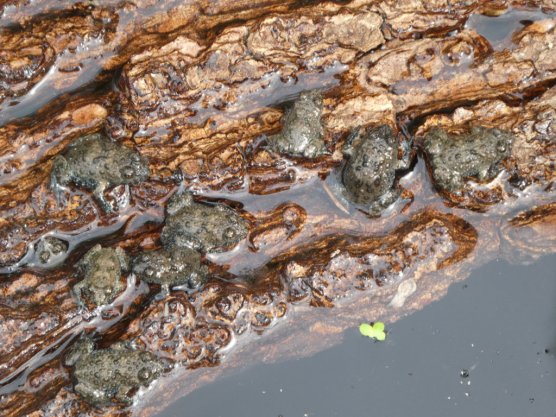
A conservation project for rare toads in the StädteRegion Aachen

The yellow-bellied toad -
"Our" unique species of toad, threatened with extinction
In the region of Eschweiler and Stolberg, the yellow-bellied toad was once common. Today only a few occurrences exist in the Stolberg area. The yellow-bellied toad is threatened with extinction in North Rhine-Westphalia. The occurrences in the Stolberg area are therefore of state-wide importance. As a supportive action to positively influence the natural development of the populations and the distribution of the species, animals from the regional populations are bred and reintroduced in two suitable areas.
Press release "Stolberger Gelbbauchunken bekommen Verstärkung", 29. Juli 2019 (in German)
Propagation through breeding
For breeding, tadpoles were taken from populations of yellow-bellied toads in the region in autumn 2017. These animals would not have survived in nature, so the donor population was not damaged by the removal of the animals. Moreover, 10 to 30 percent of the captive-bred animals were returned to their respective donor populations.
Adult animals raised from the tadpoles are used for the controlled breeding of yellow-bellied toads in breeding facilities, that is, ex-situ. A process is used that has proven successful that includes a health check of both the donor population and the captive-bred animals.
Breeding is carried out by the project partner, the Ministry for Environment of North Rhine-Westphalia (MULNV NRW) in the Metelen Species Protection Centre of the State Office for Nature, Environment and Consumer Protection of North Rhine-Westfalen (LANUV NRW), as well as through a private breeder for distributing the risk.
Reintroduction can save the "natives"
Between 2019 and 2024, at least 350 animals are to be bred each year. The females are able to produce more eggs than they can in nature, thanks to the good feed they receive. Breeding in a facility also minimises danger to the animals, increasing their chances of survival enormously.
Before captive-bred animals are released in nature, it is checked to see that there are no occurrences of yellow-bellied toads still in the settlement areas. They are reintroduced in nature protection areas where there is evidence that yellow-bellied toads once occurred. Before the reintroduction, all necessary structures that the toads require to live are set up. Breeding ponds and open areas had become lost over time because of the areas being abandoned.
The yellow-bellied toads are released as tadpoles and juvenile toads into bodies of water in the target areas so that they are thus “programmed”, and it can be ensured that the captive-bred animals will return to the waters where they were reintroduced to reproduce independently.


